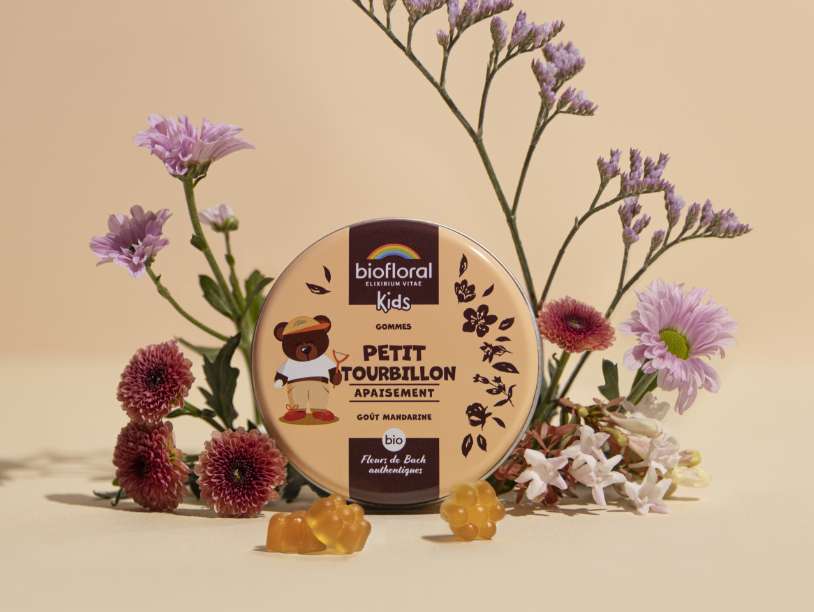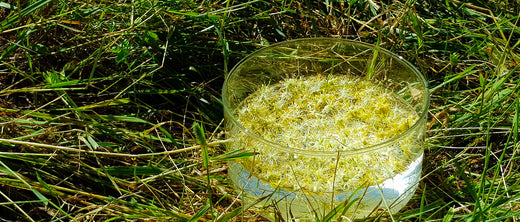Everything you need to know about Swedish Elixir
A clever blend of 59 different plants with digestive, purifying and stimulating properties, Swedish elixir is an ancestral remedy from the Middle Ages following the recipe of Maria Treben, a famous herbalist. Want to know more? Discover it in this article.
The History of Swedish Elixir
The origins of the Swedish elixir probably go back to Babylon and Egypt under the name of the elixir of long life. History tells that during antiquity, theriac, a preparation gathering up to more than 70 plants , was used as an antidote. It was composed of plants but also of viper flesh and even opium at one point in its evolution. The physicians of the Roman emperors such as Crito (Trajan's physician) and Andromache the Elder (Nero's physician) used this remedy and were also recognized for this reason.
Theriac is considered the ancestor of the Swedish elixir. The best known was the Venetian theriac because the Venetians of the time were renowned for their skill in concocting this preparation. From the 16th century, the preparation was shared with the colleges of pharmacists of Lyon and Paris, under supervision and in the presence of the notables of the city.
The recipe has been passed down through the ages and was then updated by the alchemist Paracelsus in the 16th century. It was then that Jonathan Samst, a 19th century doctor, created the recipe for the Swedish elixir for the King of Sweden and his guard so that they would never get tired!
It was finally Maria Treben, a famous Austrian herbalist, who revealed the complete recipe for this miracle elixir to the general public through her work: "Health from God's Pharmacy" (1980). An elixir that supposedly saved her life !
Back in Austria, after spending several months in a refugee camp in Bavaria where she contracted many illnesses, a woman brought Maria Treben a brownish, very odorous liquid and a copy of an ancient manuscript describing how this miraculous elixir could cure a great number of ailments. Saved by the said elixir, she then published the recipe to save other lives in turn.
What are the benefits of this ancestral remedy?
Facilitates digestion
Aloe, senna, angelica, rhubarb, manna, myrrh, saffron. All these plants have properties in the field of digestion . Aloe and senna act as a laxative. Angelica is effective against intestinal discomfort and stimulates the appetite. Rhubarb facilitates transit and is effective against constipation. Manna is useful against constipation in children. Myrrh is used in the prevention of ulcers. And saffron, for its part, is an excellent digestive and stimulates the liver.
Tones and stimulates
The Swedish elixir, thanks to the plants that constitute it, has stimulating virtues for the body and mind. Saffron helps against the feeling of agitation. Myrrh, camphor and angelica tone the nerves, the mind and the immune system of the body. The elixir is recommended by Maria Treben herself to prevent the body and mind from winter colds, changes and upheavals. Still according to Maria Treben, the Swedish elixir would make "melancholy disappear", resolve "nervous insomnia" and stimulate memory and certain other functions of the brain.
Has purifying and anti-inflammatory properties
Swedish elixir acts on all the organs of the body responsible for eliminating toxins : the liver, kidneys, intestines, skin and lungs. The elixir eliminates the poisons and toxins accumulated in these parts of the body. This acts on pimples, transit, headaches, joints, etc. Swedish elixir also relieves the pain caused by these toxins. Certain plants in the mixture help calm inflammation and promote healing.
What is it made of?
Swedish elixir is known for its many beneficial properties thanks to a composition rich in medicinal plants. This elixir acts as a powerful depurative, helping to purify the blood and promote its fluidity, thus allowing the regeneration of the body. Let's take a closer look at its main components:
- Aloe (Aloe capensis) : known for its astringent, healing, disinfectant and laxative properties when used internally.
- Senna leaf (Cassia angustifolia) : mainly used for its laxative effects.
- Angelica root (Angelica archangelica) : promotes the secretion of bile as well as gastric and pancreatic juices, aiding digestion.
- Alpine carline root (Carlina acaulis) : has bacteriostatic, cholagogue and purifying properties.
- Zedoary root (Curcuma zedoaria) : promotes digestion and has purifying effects on the blood.
- Rhubarb root (Rheum palmatum) : acts as a purgative and regulates intestinal transit.
- Camphor (Cinnamomum camphora) : antiseptic, it also plays a role in blood circulation.
- Manna (Fraxinus ornus resin) : promotes intestinal peristalsis.
- Myrrh (Commiphora molmol resin) : treats infections of the mucous membranes and has carminative and intestinal protective properties.
- Saffron (Crocus sativus) : used for its sedative properties and to calm gastric spasms.
Swedish Elixir, or the power of bitter plants
Swedish elixir, like other concentrated elixirs called "long life", therefore draws a large part of its properties from the bitter plants present in its composition. These plants, often absent from our modern diet, play a crucial role in regulating metabolism.
The bitter plants included in the elixir intervene on various digestive and metabolic functions:
- they promote the secretion of salivary glands and gastric juices, thus aiding digestion;
- they accelerate the contractions of the stomach and gallbladder;
- They positively influence the sympathetic regulation of the nervous system and help the functions of the hepatobiliary system, including bile production.
The actions of Swedish Elixir are essential to maintain optimal liver function, especially in our society where diet can often be loaded with pollutants. By stimulating the liver and other digestive organs, bitter plants help prevent or regulate various digestive or metabolic disorders.
The recipe for the little Swedish liqueur
Here is the recipe for Maria Treben's Little Swedish Liqueur , inspired by the writings of the Swedish physician and rector of the Academy of Medicine, Dr. Samst:
- 10 g of aloe*;
- 5 g of myrrh;
- 0.2 g of saffron;
- 10 g of senna leaves;
- 10 g of camphor;
- 10 g rhubarb root;
- 10 g of zedoary root;
- 10 g of oak fruit (manna);
- 10 g of venezian theriak;
- 5 g of carline root;
- 10 g of angelica root.
*Instead of aloe, it is also possible to use yellow gentian roots or wormwood powder.
As for camphor, only natural camphor should be used.
Macerate the "Herbes du Suédois" in a litre and a half of 38 to 40% grain brandy, or in another good brandy, in a two-litre wide-necked bottle, and let it rest for 14 days in the sun or near a stove. Stir daily, as well as before transferring to a small bottle and before use. Fill the liquid into small bottles that are tightly closed and kept cool. In this way, it is possible to keep this elixir for many years. The longer it rests, the more effective it is.
Directions for use of Swedish Elixir
Swedish Elixir can be taken internally and externally.
- Internally to benefit from the digestive, tonic or purifying virtues : it is possible to take between 1 and 3 tablespoons per day depending on the needs you encounter. One spoon per day is effective for prevention and 3 spoons are effective for chronic discomfort. It is recommended to dilute the elixir in water or herbal tea and to distribute its intake before or after meals.
- Externally for joint pain, digestive pain, etc .: you can combine internal intake with external application as well. Moisten a compress or cloth with the elixir and apply to the area of pain to nourish the skin. Keep the cloth on the area for 2 to 4 hours or even a whole night if this is bearable.
This elixir is distinguished not only by its effects on digestion and detoxification, but it is also valued for its adaptogenic character. It helps the body adapt to stress and change, acting as both a tonic and a soother.
When used externally, Swedish elixir is also beneficial for various skin treatments such as bruises, wounds, bites, and even more severe conditions such as psoriasis. It can be applied with a soaked cloth or in the form of a spray to calm pain and inflammation, promoting rapid and effective healing. It can also be used to relieve sore muscles and rheumatic pain.
Contraindications of Swedish Elixir
Due to its alcohol content and its composition based on purgative plants, the elixir is not recommended for children and pregnant or breastfeeding women. It is also advisable to seek advice from a doctor.
For people who are more sensitive to taste and/or smells, there is an alternative to the elixir: infusions. Composed of 59 organic and quality plants, the infusion stimulates digestive functions and contributes to good transit. Some of the 59 plants improve digestion (gentian and angelica), intestinal transit (senna and rhubarb), urinary elimination functions (rosemary and milk thistle) and resistance to fatigue (gentian).
Sources
- https://www.herbonata.fr/conseil-les-bienfaits-de-l-elixir-du-su-dois-sur-la-santé
- https://doctonat.com/elixir-suedois/
- http://materiamedica.canalblog.com
- https://www.universalis.fr









Leave a comment